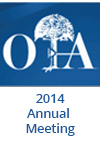
OTA 2014: Functional recovery similar between locking plates and K-wires for displaced DRF

OTA 2014: Functional recovery similar between locking plates and K-wires for displaced DRF
A Randomized Controlled Trial of Percutaneous Fixation With Kirschner Wires Versus Volar Locking-Plate Fixation in the Treatment of Adult Patients With a Dorsally Displaced Fracture of the Distal Radius
CONFERENCE ACE REPORTS
This ACE Report is a summary of a conference presentation or abstract. The information provided has limited the ability to provide an accurate assessment of the risk of bias or the overall quality. Please interpret the results with caution as trials may be in progress and select results may have been presented.
Synopsis
461 adult patients with acute, dorsally displaced fractures of the distal radius were randomly assigned to undergo either Kirschner wire fixation or locking-plate fixation. This trial aimed to evaluate the functional and cost-effectiveness of both treatments over the first year after surgery, with follow-up conducted at 3, 6, and 12 months. The primary outcome of interest was the Patient-Rated Wri...
To view the full content, login to your account,
or start your 30-day FREE Trial today.
FREE TRIAL
LOGIN
Forgot Password?
Explore some of our unlocked ACE Reports below!

Learn about our AI Driven
High Impact Search Feature
Our AI driven High Impact metric calculates the impact an article will have by considering both the publishing journal and the content of the article itself. Built using the latest advances in natural language processing, OE High Impact predicts an article’s future number of citations better than impact factor alone.
Continue



 LOGIN
LOGIN

Join the Conversation
Please Login or Join to leave comments.